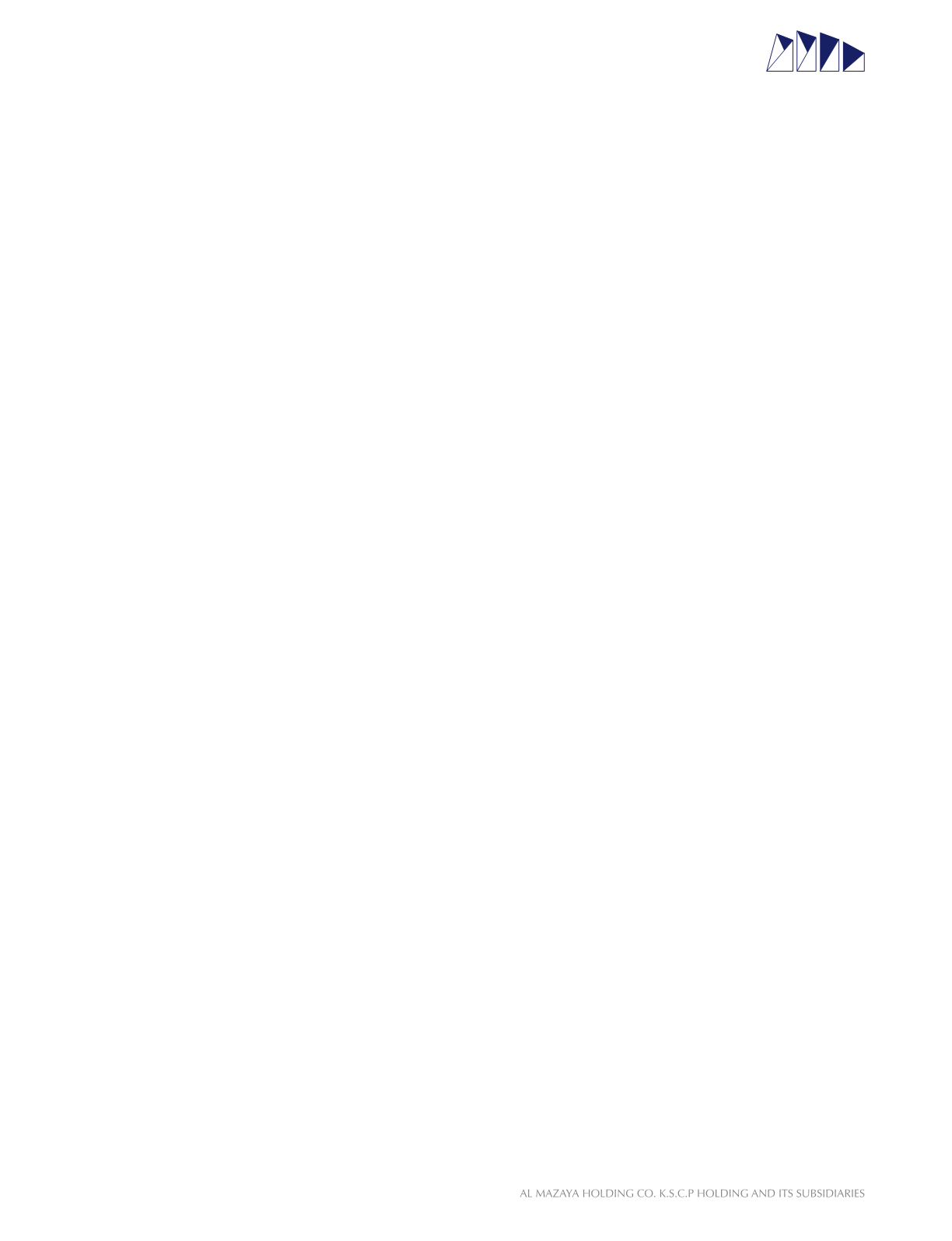

ANNUAL REPORT
2015
Notes to The Consolidated Financial Statement
AL MAZAYA HOLDING COMPANY K.S.C.P. AND ITS SUBSIDIARIES
31 December 2015
Goodwill is initially measured at cost, being the excess of the aggregate of the consideration transferred and the amount recognised
for non-controlling interest over the Group’s net identifiable assets acquired and liabilities assumed. If this consideration is lower
than the fair value of the net assets of the subsidiary acquired, the difference is recognised in profit or loss.
After initial recognition, goodwill is measured at cost less any accumulated impairment losses. For the purpose of impairment
testing, goodwill acquired in a business combination is, from the acquisition date, allocated to each of the
Group’s cash-generating units that are expected to benefit from the combination, irrespective of whether other assets or liabilities
of the acquiree are assigned to those units.
Where goodwill forms part of a cash-generating unit (group of cash generating units) and part of the operations within that unit
is disposed of, the goodwill associated with the operation disposed of is included in the carrying amount of the operation when
determining the gain or loss on disposal of the operation. Goodwill disposed of in this circumstance is measured based on the
relative values of the operation disposed of and the portion of the cash-generating unit retained.
Financial assets and liabilities
Initial recognition and measurement
Financial assets and liabilities within the scope of IAS 39 are classified as “loans and receivables”, “available for sale investments”
and “financial liabilities other than at fair value through profit or loss”. The Group determines the appropriate classification of
each instrument at initial recognition.
Regular way purchases or sales of financial assets are recognised using trade date accounting. Financial liabilities are not
recognised unless the Group becomes a party to the contractual provisions of the instrument.
Financial assets and liabilities are measured initially at fair value (transaction price) plus, in case of a financial asset or financial
liability not classified as at fair value through profit or loss, transaction costs that are directly attributable to the acquisition or issue
of the financial asset or financial liability. Transaction costs on financial assets and financial liabilities at fair value through profit
or loss are expensed immediately.
Subsequent measurement
The subsequent measurement of financial assets and liabilities depends on their classification as described below:
Cash and bank balances
For the purpose of the consolidated statement of cash flows, cash and bank balances consist of cash in hand and bank balances,
net of restricted cash balances.
Loans and receivables
Loans and receivables are non-derivative financial assets with fixed or determinable payments that are not quoted in an active
market. After initial recognition, loans and receivables are carried at amortised cost using the effective interest rate method, less
impairment losses, if any. Amortised cost is calculated by taking into account any discount or premium arising on acquisition and
fees or costs that are an integral part of the interest rate method.
The effective interest rate method amortisation is included in the consolidated statement of income. The losses arising from
impairment are recognised in the consolidated statement of income.
Bank deposit and accounts receivable are classified as “Loan and receivables”.
59


















